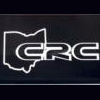How about:
OUTLAW 10.5 RULES
2005
Class Description: Class description: Outlaw 10.5 is a heads up class designed for vehicles produced from a major manufacturer. This means vehicle must come from a major assembly line. Vehicles do not require a VIN # from the manufacturer. Vehicle must weigh a minimum of 3,000 lbs. including driver. Vehicle constructed after January 1, 2004 must be from a major assembly line or a body in white (no panel cars).
Body: : Factory quarter panels and roof required with factory dimensions. All factory pillar post and door jams must be present. Carbon fiber or fiberglass panels limited to front-end pieces, door, deck-lid, and bumpers and must be factory appearing. After market spoilers and wings allowed. Wing size is limited to 20” from the transition point to the tip of the spoiler. Side spill plate, size 8” maximum. Hood, doors must be operable. Hood must be separable from the front end. Hatchback and deck-lid vehicles must have factory dimensions. Stock or stock appearing grills must be retained. Vehicle must have functioning head lights and tail lights. Hide-away headlamp style vehicles must have some type of working headlights, at least behind headlight grill. In case of hidden headlights that completely fold away with no grills, fog lights may be used. (Tech decision will be final). Lexan may be used in place of factory windows or glass. Minimum ground clearance of 4” from the front of the nose to 12” behind centerline of the front axle.
Interior:: Must have stock appearing dash (glass or carbon fiber replica allowed). After market steering column allowed but must be in stock location. Driver’s seat must be in stock location and the centerline of the driver’s shoulder must not sit behind the plane of the door jam. Foot control pedals must not protrude further than rear point of dash. Some exceptions on seat position rule for taller drivers allowed. (Tech decision will be final).
Firewall: : Factory firewall must be in stock location, but may be notched for clearance for bell-housing, distributor, blower, or inter-cooler. Smoothing of firewall for appearance allowed. Smoothing may consist of sheet metal.
Front Chassis/Suspension: No full tube chassis allowed. Back half vehicles only. The back half-lower frame section must not extend forward past the rear most portion of the K-member or cross-member and the suspension components can not attach to it. Complete stock front frame rails from the firewall forward must be retained. Front frame horns may be modified for fitting of removable front end. Stock type suspension and configuration required. All factory control arms must bolt in the factory frame mounting location or the K-member/crossmember. The lower control arm should bolt in factory location. All vehicles manufactured with four control arms must retain four functioning control arms. Spindle and dampening device can not be directly welded or bolted together. After market spindles allowed. Commercially available coil-overs, springs, or struts allowed. Modifying of strut or shock towers allowed for header and engine clearance only. Must retain at least 50% of the original tower. Top plate may not be modified except mounting holes may be slotted (not relocated). Upper shock tower bar may be grafted in. (Tech decision will be final).
Rear Chassis/Suspension: Any after market suspension allowed but must meet the safety requirements necessary by this association. (Tech decision will be final).
Engine: Any combination of power adders allowed. Mufflers required for all vehicles except vehicles with turbo charger. Exhaust must be directed toward rear of vehicle. No frontal or side exit in front of front wheels.
Drivetrain: Any converter type transmission allowed. Clutch cars must add 100 pounds to minimum weight.
Tires: Any slick up to 10.5” side wall designation or DOT tire up to 13.5” side wall designation allowed. Drive wheels must meet SFI spec 15.1.
Electronics: All electrical devices allowed except optical censoring devices that work from activation of tree.
Lettering/Decals: Sponsorship and decals limited to windows. One sponsor decal allowed on each side of hood scoop.
Safety Equipment: All safety equipment must meet safety standards as per NHRA PRO-MOD. Three-inch driver restraint system meeting SFI spec 16.1 required. Must be updated at two-year intervals from date of manufacture. Helmet meeting Snell SA95, 2000 or SFI 31-2A required. For alcohol vehicles, suit meeting SFI spec 3.2A/20. Gloves and boots meeting SFI spec 3.2A/15 required. For gas/nitrous vehicles, jacket and pants meeting SFI spec 3.2A/15 required. Gloves meeting SFI spec 3.3/15 and shoes meeting SFI spec 3.3/5 required. Must have working, on-board fire suppression system.
General Rules: : Deep staging allowed, but track will not wait for a racer to get deep staged. When both pre-stage bulbs are activated, either side stage light will start a 7-second stage count. Failure to activate stage bulb within 7 seconds will result in disqualification. (Starter’s decision will be final). Disqualification will be based on a first or worst situation. (Track official decision final). Rules on controversial situations will be final at the discretion of track and/or tech official.CREW MEMBERS: Allowed on starting line or burn out area for your vehicle and must leave starting line after pass has been made. Starting line official has the right to stop the race until all non-crew members of cars staging has been cleared.ALL OUTLAW 10.5 vehicles must cross scales after each competition pass is made.



